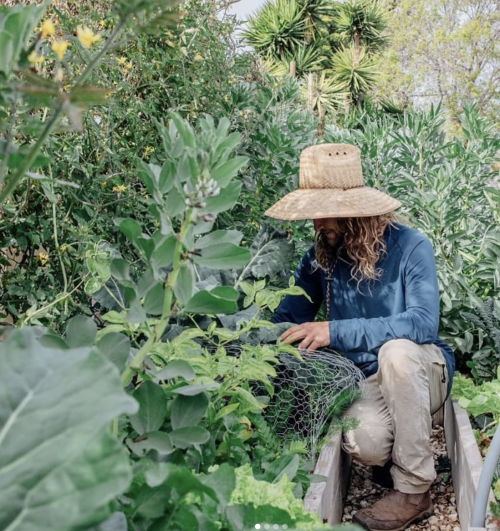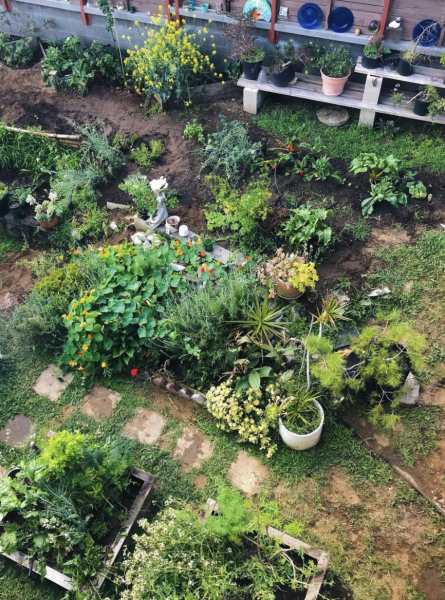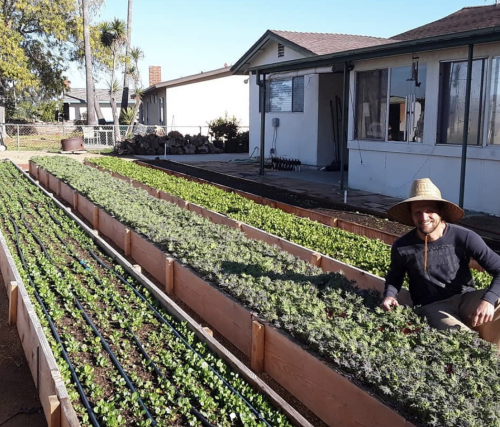By Jack Ramsey / El Inde
An aroma of damp soil, human sweat and fresh leafy greens was in the air. A college kid was spending his afternoon caring for a small backyard garden on a hot California day. Evaluating his excess of crisp, ripe food, he could not think of enough roommates and neighbors to give the beautiful green produce to. With a supply of fresh food outpacing the demand of his immediate network, Greg Reese sat back and realized he had an idea.
Reese grew up with a mother who worked in teaching and a father in insurance, and following in their footsteps, went to California State University, San Marcos, to pursue a business degree. His plans began to change after his college roommate gave him an old bed frame. Placing soil and seeds inside of the frame, Reese began to convert the old furniture into a backyard garden. At first, it was a hobby and cheap way to feed himself during his college years. He spent his days between going to school and growing fresh foods in his backyard.
“I just started getting into backyard gardens. I created this small farm and didn’t really know where it was going to go. It was like a half-acre or so and I pretty much maxed it out,” Reese said. “The one that took it home for me was in my own backyard, not even a quarter-acre. I ran this thing and maxed it out because I was living there and I could tend to it all the time.” That’s when Reese knew there was something more he could do.

Photo courtesy of @_gregreese on Instagram.
After gathering valuable experience from a few mentorships, Reese stepped out of his previous mindset to become a first-generation farmer, leaving the prospective office job behind. He started a program called “1000 Tiny Farms” as part of the nonprofit that he co-founded, “Sea + Soil.” The program, founded in Encinitas, California, aims to create a regional network of small-scale, fully regenerative farms and gardens that use forgotten spaces like alleyways and old parking lots, connecting farmers directly to consumers. The farms are anywhere from one to five acres in size with a huge variety of produce grown on them — anything from heads of lettuce to root vegetables, like carrots, or really anything that the end consumer demands.
“Nutritional value or nutrient density tends to deteriorate after harvest. So, as soon as you cut, say a head of lettuce, it’s slowly starting to decompose and to die. It’s losing nutrients every single minute or second. The faster you can get it to people, the better, and the best way to do that is to have a farm really close by to where people live,” Reese said.
The farms use regenerative farming tactics to provide nutritious, local food to people and restaurants. Regenerative agriculture focuses on the conservation and rehabilitation of food systems rather than continuously growing cash crops on the same plot of land year after year. This goes beyond a fully organic approach, including crop rotations and other traditional farming practices used for centuries before the rise of chemical farming in the 1990s.
Right now, Reese’s network of tiny farms span across Southern California, from San Diego to Orange County to Los Angeles. With the right marketing and distribution strategy, Reese believes this is an approach that can scale anywhere and even help absolve issues like food deserts.
“I saw the quality of produce was exceptional when you can have it on a small scale and I can tend to it personally and see what’s going on on every corner of the farm. With quality is flavor and nutrition in whatever produce is there,” Reese said.
“If you kill one thing in an ecosystem, then a lot of other things start to fall apart. The only way plants get their nutrition is from biology in the soil, so if you’re starting to kill that biology you’re depleting your nutrients in the plant,” Reese said. “But if you go the other way and promote life, it does the exact opposite which is baffling to most people. It’s a long game.”

Photo courtesy of @1000tinyfarms on Instagram.
The most popular chemical used in conventional agriculture today is the herbicide glyphosate, the active ingredient in the popular weedkiller RoundUp which was invented by a Japanese chemist in 1974. However, it didn’t soar to popularity until 1996 when its manufacturer, Monsanto, released genetically modified herbicide-resistant seeds that allowed farmers to freely spray the chemical without killing their crop.
The company that makes the herbicide that can harm crops is also developing and selling the “RoundUp Ready” seeds that are needed to utilize the herbicide. Farmers have to purchase both the chemical and the genetically modified seed from the same company.
“They have increased their share of the market. They’re going to be making more money,” explains Dr. Samantha Orchard, an associate professor who teaches biotechnology at the University of Arizona. “So some people are saying they basically created the market for ‘RoundUp Ready’ crops because they created RoundUp,” Orchard said.
Today, it is estimated that over 4.5 billion pounds of glyphosate are sprayed around the world every year. Additionally, a 2011 CDC study found that 54% of children in the United States reported some kind of chronic disease or disorder ranging from celiac disease to autism to cancer. The rise in the chronic inflammatory conditions has followed a similar trajectory to glyphosate being introduced into our food and water systems. The debate about whether this is correlation or causation is ongoing, but momentum for the latter has gained traction in recent years.
“The way that glyphosate does work, the way it ends up killing a plant is it blocks an enzyme in the shikimate pathway. The terminal products of that multi-enzyme pathway are three amino acids that are essential. If there is glyphosate around it will block one of the enzymes called EPSP Synthase and by doing that the plant cannot make those three essential amino acids,” Orchard said.
The concern for humans is that these are essential amino acids that cannot be produced within the body and therefore are required to be taken in from our food and environment. Intricacies arise from how much glyphosate residue is on the plants that are not being killed, but are on the RoundUp Ready crops that the end user consumes.
“There’s an incredible lack of nutrients in food. Then not to mention the pesticides and things, the USDA says it’s O.K. but they’re also in bed with the pesticide (and herbicide) companies as well. So, you can’t really trust what people say,” Reese said. “Glyphosate, for example, we don’t really know the long term effects of it yet. We’re starting to see things, but it could be in the soil for two, three, five hundred years.”

Glyphosate happens to be a water-soluble chemical which means it is far more difficult to remove from our environment and water system. This means at least trace amounts of the herbicide will circle through the water cycle for an unidentified amount of time into the future. This affects everyone, not just the farmers spraying it or the people consuming it.
Farmers like Reese are becoming increasingly rare as the number of Americans working directly on farms was just 1.3% in 2019. This is due to the transition away from the multi-generational family farms to massive agricultural conglomerates buying up land and autonomating farming practices. Taking the place of Reese and other small-scale family farms are the agricultural giants most interested in turning a profit resulting in the use of chemical like glyphosate.
“There’s a depletion of quality in our food and our soils. So, (small-scale farms) are a way to create jobs and get fresh food to people in a timely manner, but also to be affordable,” Reese said. “I think there is a lot of room for collaboration in this space. It’s creating community around a farm and if you can do that several times over, you can create a really cool society.”
